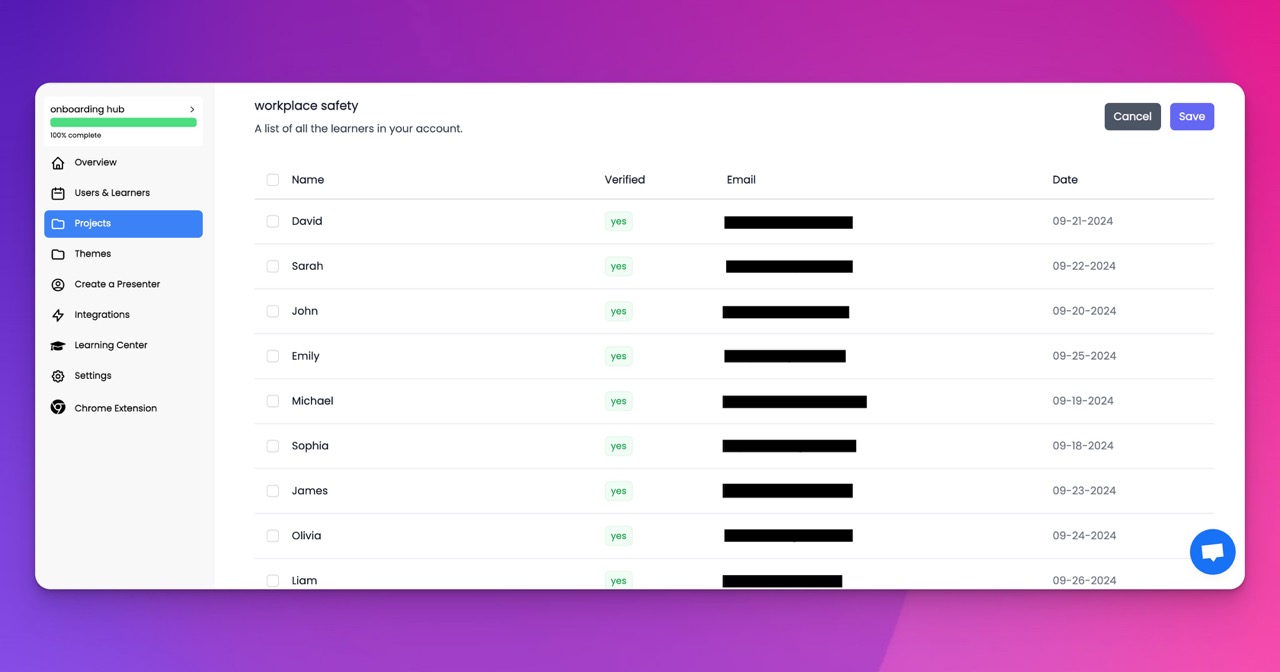🎉 Trainday now integrates with Zendesk and Hubspot 🎉 Trainday now integrates with Zendesk and Hubspot 🎉 Trainday now integrates with Zendesk and Hubspot
🎉 Trainday now integrates with Zendesk and Hubspot
🎉 Trainday now integrates with Zendesk and Hubspot
Contact
"The Power Of Virtual Training Systems: Unleashing The Benefits Of AI Avatars"
The Power of Virtual Training Systems: Unleashing the Benefits of AI Avatars
In today's fast paced world, technology continues to revolutionize various industries, and training and development are no exception. With the advent of artificial intelligence (AI) avatars, virtual training systems have become more powerful than ever before. These advanced systems offer numerous benefits that are transforming the way organizations train their employees. In this blog post, we will explore the power of virtual training systems and how AI avatars are unleashing their potential.
Firstly, what are AI avatars? AI avatars are virtual representations of real people, powered by AI algorithms. These avatars are designed to interact with learners in a lifelike manner, simulating real world scenarios and providing personalized training experiences. By harnessing the capabilities of AI, these avatars can adapt to individual learning styles and provide tailored feedback, making training more engaging and effective.
One of the key benefits of AI avatars in virtual training systems is their ability to offer a safe and controlled environment for learners to practice and develop their skills. For example, in industries like healthcare or aviation, where mistakes can have severe consequences, AI avatars can simulate complex procedures and scenarios, allowing trainees to gain hands on experience without any real world risks. This not only enhances the learning process but also boosts trainees' confidence and competence.
Moreover, AI avatars in virtual training systems enable organizations to scale their training efforts effectively. Traditional training methods often require physical resources and instructors, limiting the number of participants and increasing costs. With AI avatars, training programs can be delivered on demand, eliminating the need for travel or scheduling conflicts. This scalability allows organizations to train a large number of employees simultaneously, ensuring consistent and standardized training experiences across the board.
Another significant advantage of AI avatars is their ability to provide personalized feedback and analysis. By analyzing learners' interactions, AI algorithms can identify strengths, weaknesses, and areas for improvement. This data driven feedback helps learners understand their progress and focus on specific areas that require more attention. With AI avatars, training becomes more adaptive and efficient, maximizing the impact of training programs on learners' performance.
Furthermore, AI avatars can also enhance the accessibility and inclusivity of training programs. These avatars can be programmed to communicate in multiple languages, ensuring that language barriers do not hinder the learning process. Additionally, AI avatars can be designed to be culturally sensitive, accommodating diverse backgrounds and perspectives. This inclusivity promotes a more engaging and inclusive learning environment, where all learners can feel valued and supported.
As with any technological advancement, there are potential challenges and considerations that organizations need to address when implementing AI avatars in virtual training systems. For instance, ensuring the avatars' realism and ability to respond appropriately in various scenarios requires continuous development and improvement. Additionally, data privacy and security must be carefully managed to protect sensitive information shared during training sessions. Organizations must also provide proper training to instructors and learners to effectively utilize AI avatars and capitalize on their benefits.
In conclusion, the power of virtual training systems lies in their ability to provide immersive, scalable, and personalized learning experiences. AI avatars play a crucial role in unleashing this potential, offering lifelike interactions, personalized feedback, and a safe learning environment. With the integration of AI avatars, organizations can train employees more effectively, improve performance, and drive growth. As technology continues to evolve, it is essential for organizations to embrace these advancements and harness the power of AI avatars in their training and development strategies.
Accelerate Compliance.
Deliver OSHA-Ready Courses Instantly.
Empower your team with data-driven training solutions tailored to your industry's safety standards. Stay compliant, reduce risks, and boost productivity with AI-powered course creation.
